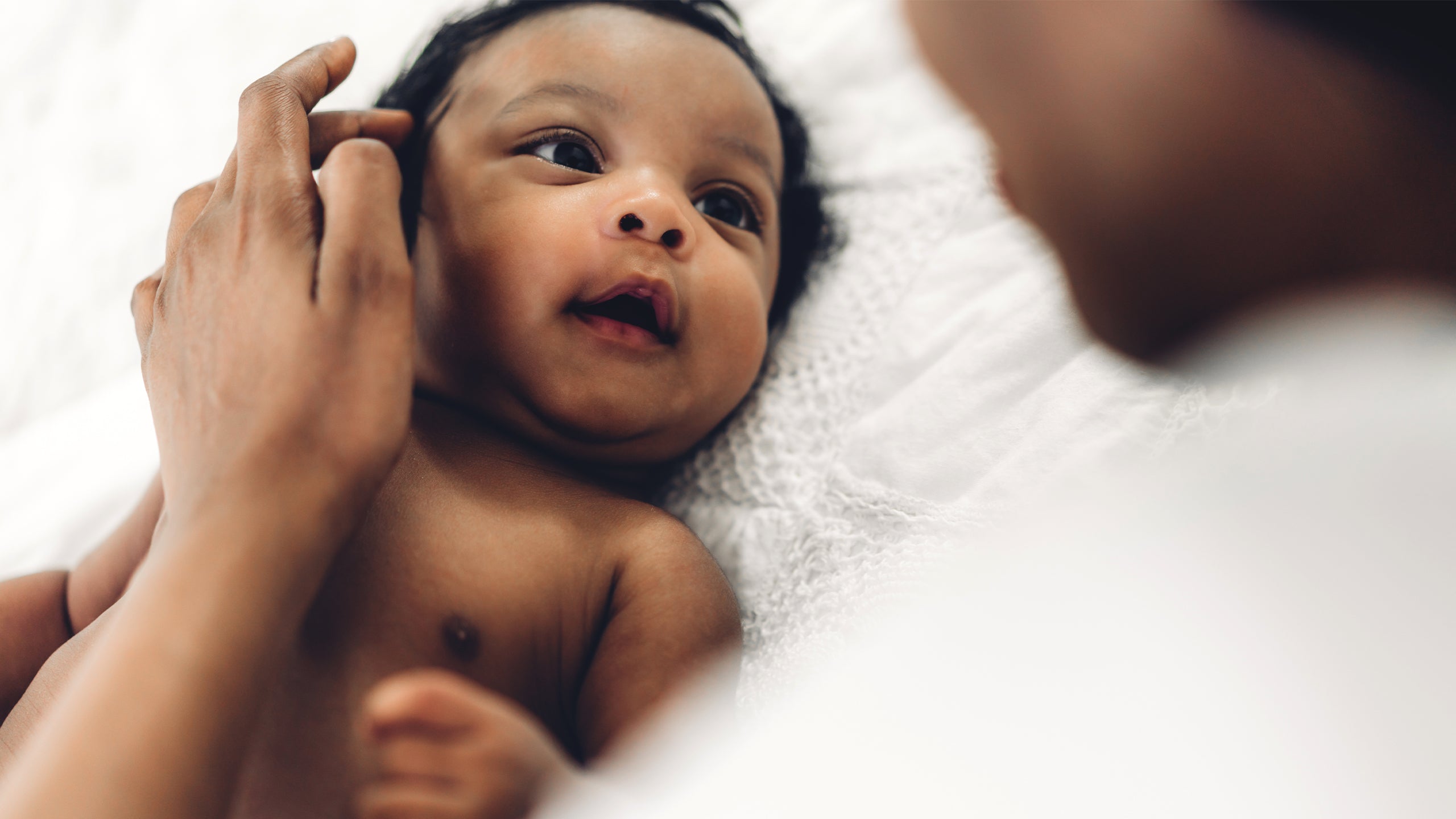You know the saying “smooth as a baby’s bottom?” Well, it’s not always true. Just like adult skin, a baby’s skin can become rough, dry, and irritated.
The reason babies’ skin is often so soft and smooth is because it’s thinner and more delicate than adult skin. However, that’s exactly what also makes babies’ skin more susceptible to becoming dry and/or irritated. Even minor environmental and hormonal factors can upset this sensitive balance and lead to baby blemishes and rashes.
Thankfully, most baby blemishes and rashes are common and go away in a matter of days, but there are things to keep in mind regardless to ensure the health of your baby’s skin.
Sun Exposure
The most significant outdoor environmental factor that can affect your baby’s skin is the sun. Doctors and the FDA don’t recommend using sunscreen on babies younger than six months due to increased risk of side effects (including rashes).
Because sunscreen isn’t recommended for young babies, it’s even more crucial to keep them in the shade as much as possible.
You can do this by dressing your baby in a hat that covers the neck and ears — as well as putting them in loose-fitting and lightweight clothing that covers their arms and legs. This will protect them from harsh UV rays and prevent chafing as well as any additional irritation from tight clothing.
Keeping your baby underneath the shade of a tree, tent, umbrella, or building overhang also helps protect their skin.
Remember that UV rays are strongest between 10 a.m. and 2 p.m., so be even more aware and cautious of sun exposure during those times. If possible, keep your baby indoors during the heat of the afternoon and instead enjoy sunshine in the mornings and evenings.
Bathing
As a parent, keeping your baby clean and bathed is likely pretty high on your priority list. However, babies don’t need baths every day if they’re being wiped and cleaned after feedings and diaper changes. Two or three baths per week is enough to keep them healthy and not dry out their skin or cause other irritation. Bathing your baby frequently will strip the skin microbiome and natural protective oils.
So, don’t worry about bathing your baby every night. If they’re not overly dirty, it’s actually for the best not to!
To help protect your baby’s skin, avoid using soaps and bubbles during bathtime. Washing with soap strips your baby’s skin of its natural oils and can disrupt the delicate balance of the skin microbiome.
Instead, use a gentle wash and warm (not hot) water to bathe your baby. A soft washcloth or sponge may help but can also lead to irritation, so be careful regarding the materials you’re exposing your baby to.
Babies should not be bathed in a tub or sink until after the umbilical cord falls off (and after circumcision heals, if applicable). Until that happens, a sponge bath will suffice.
There are many dangers at bathtime! Be aware of your water temperature, and never leave your baby in the tub or sink alone. You should always have a hand on your baby while they’re in the water — and you only need a couple of inches in the tub to bathe your baby. Avoid overfilling the tub to keep your baby safe. Oh, and don’t forget to take off your watch if it’s not waterproof, Mom!
Moisturize
Because your baby’s skin is so sensitive and absorbent, be sure to avoid fragrances and preservatives in any products you use on their skin. However, it’s still important to keep their skin moisturized to avoid baby eczema and other skin conditions that can be exacerbated by dry skin.
While you can apply gentle, hypoallergenic cream or lotion at any time of day, moisturizing immediately after bath time especially helps lock in moisture and promote smooth, supple skin.
Avoid Triggers
Sun exposure, over-bathing, and fragrances and preservatives can all trigger dry or irritated skin in your baby.
But the list of possible dry skin (and eczema) triggers doesn’t end there. Other possible causes of red, irritated, or dry skin include:
- Outdoor allergens
- Certain laundry detergents
- Hot water or weather
- Harsh soaps
- Dry air
- Alcohol-based lotions
- Bubble bath products
Unfortunately, because every baby’s skin is unique and there are so many factors at play, you can’t easily identify dry skin triggers without a little trial and error. The good news is once you’ve determined a trigger, simply avoiding it should significantly clear up symptoms!
Keep It Simple
When it comes to your baby’s skin care routine, keep it simple! That includes keeping the products you use to a minimum as well as making sure the ingredients list for each product is simple.
You don’t need or want any harsh ingredients in your baby’s skin care routine. The goal is to help preserve your baby’s skin microbiome and natural healthy oils.
Avoid switching up your products and testing out new creams, washes, etc. When you find something that works and agrees with your baby’s skin, keep it! Less is more.
Conclusion
As a parent, it can be discouraging to see your child suffer from dry, red, flaking, or itching skin. However, with babies’ delicate and absorbent skin, rashes and skin issues aren’t uncommon — despite what the phrase “smooth as a baby’s bottom” may imply. So don’t beat yourself up about it! You’re an amazing parent.
By using simple and gentle skincare products, bathing your baby at healthy intervals, minimizing exposure to UV rays, and applying hypoallergenic moisturizer, you can help care for your baby’s skin.
Sources:
- https://pubmed.ncbi.nlm.nih.gov/31188166/
- https://www.hopkinsmedicine.org/health/wellness-and-prevention/newborn-skin-101
- https://www.stanfordchildrens.org/en/topic/default?id=bathing-and-skin-care-for-the-newborn-90-P02628
- https://www.healthline.com/health/baby/tips-for-protecting-baby-skin
- https://www.parents.com/baby/care/skin/how-to-care-for-baby-skin/
- https://www.fda.gov/consumers/consumer-updates/should-you-put-sunscreen-infants-not-usually

